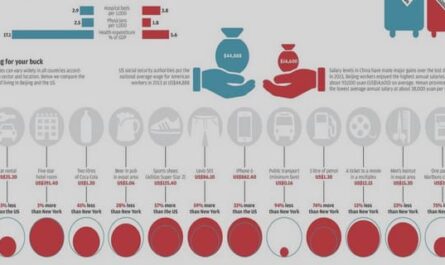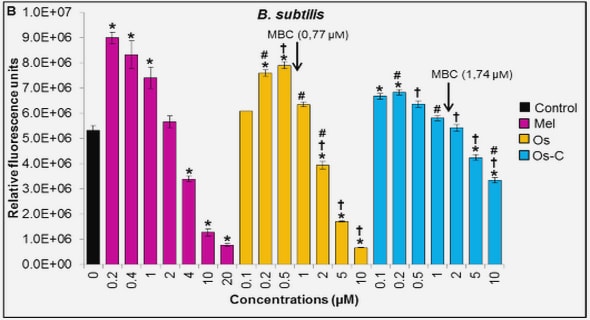Get Complete Project Material File(s) Now! »
Variations in trade mark systems
Certain specificities remain in the different trade mark legal systems. For in-stance, contrary to other countries’ systems, the OHIM does not refuse registration on relative grounds (i.e. if the trade mark is similar to an already registered one). It is entirely up to individual entities to monitor and oppose other applications to register. The US legislation also contains some distinct features, such as the concept of incontestability: once the registration is over five years old, it becomes incontestable if it is maintained through a showing of continuous use. It cannot be cancelled on grounds of prior use of a confusing similar mark or on grounds that the mark is merely descriptive. More importantly, the status of unregistered trade marks is to be harmonised in the various laws.
In common law systems, unreg-istered trade marks can be protected as long as they are well-known, if the trade mark owner can prove that he/she effectively used the trade mark, and the use by another causes damages to his/her own business (through the tort of passing off). Some countries on the contrary have pure registration systems, like China, and do not recognize trade mark rights arising through use, although this constitutes a requirement of the Paris convention and of the TRIPs agreement. The various specificities of trade mark legal systems have an impact on the number of applica-tions and their characteristics. Those specificities must then be taken into account in the analysis of trade mark data, especially in international comparisons. We come back on this question more precisely in the Annex at the end of this thesis.
Despite those variations, the various trade mark systems are on the whole rela-tively harmonised worldwide. If one compares the various trade mark laws, they give roughly the same definition of a trade mark. The application procedures, apart from the fees, are very similar in every country – except in the US. This ho-mogeneity comes partly from the various international conventions and treaties concerning trade mark signed by a large number of countries. For European coun-tries, the national trade mark laws generally correspond to the implementation of European directives, which explains their great similarity. Furthermore, the Paris Convention as well as the TRIPs agreement and the Trade mark Law Treaty give guidelines on the procedures, counting methods and on the scope of the law, which implies a convergence between the legislations12. Besides, thanks to the registra-tion systems, trade mark datasets are available with information on the owner, its geographical origin, and the dates of application and registration. Then trade mark data are susceptible to be subjected to various economic analyses. In the fol-lowing section, we present an overview of the principal economic studies focusing on or referring to trade marks, and in particular those related to their links with innovation.
Socio-economic role of trade marks
One central question in the economic analysis of trade marks, which has di-vided the economists, is the question of the impact of trade marks on social wel-fare. Landes and Posner, figures of the Chicago School “Law and Economics Approach”, argue that trade mark law promotes economic efficiency (Landes and Posner 1987). Their basic argument is that trade marks help solve the information asymmetry issue between sellers and buyers, highlighted by Akerlof (1970). The authors build a formal model based on the integration of consumers’ search costs whilst choosing their products. Firms use trade marks to signal that their products are of a certain quality. The investments of firms in trade marks thus reduce search costs by making products and producers easier to identify in the market. When differentiated quality is introduced, the model also predicts that higher trade mark investment goes with higher quality of products, as those investments ensure that the firm, and not its competitors, will benefit from the reputation associated to this quality. According to the authors, trade marks are therefore beneficial to society, at least in view of the two above results, not to mention the potential subjective value that they represent for consumers.
This vision of trade marks contributing to economic efficiency has been chal-lenged in the theoretical industrial organisation literature on brands and barriers to entry. Here, a well-known argument is that firms may use product or brand dif-ferentiation to create barriers to entry by incumbents and receive monopoly rents (Chamberlin 1933). This question is precisely explored in a paper by Economides (1988). While acknowledging the advantages offered by trade marks as regards the facilitation of consumer decision and the creation of incentives to quality, Econo-mides argues that trade marks may at the same time give rise to certain market distortions.
According to him, trade marks open competition in a new dimension, the marketing and the corresponding mental images. One possible distortion aris-ing from this is that the ability to differentiate in perceptions may lead to too high a number of firms entering the market, as firms may gain market power by target-ing different segments of the population. This is likely to be an issue in markets where the entry of too many firms is under-optimal, for example in case of high fixed costs. Trade marks, besides, may give rise to barriers to entry, as brand loy-alty tends to reduce the number of differentiated products on the market. Overall, Economides considers that distortions implied by trade marks and their effect on barriers to entry are difficult to quantify, so that nothing can be asserted either on the beneficial or detrimental nature of trade marks on social welfare.
Although they tackle questions potentially related to innovation (incentives to quality; barriers to entry), those studies do not directly address the link between trade marks and innovative activities, which is a question independent of their impact on social welfare. As regards the former question, we turn to the management and marketing literature in order to gain insights into the role of trade mark use in firms’ activities.
The use of branding in the launching of new products
Several lines of studies suggest that trade marks are likely to be involved in the innovation process. To start with, many studies in the business literature mention the importance of branding in the commercial implementation of new products. Trott (2005) for example considers that brand names are a key element of the mar-keting strategy to launch a new product, as well as the other characteristics of the good (technology, packaging, price, etc.)14. Brands enable firms to inform con-sumers about products, their characteristics, their quality and also possibly their novelty. Consumers use them to make their choice between competitive offerings, and they can choose to remain loyal to one preferred brand. Brands are then es-sential to build a stable long term demand.
According to Aaker (1991), there are several possible branding strategies for firms to launch a new product15. Some firms choose to identify each product with a separate name (e.g. Procter & Gamble has developed more than 70 sepa-rate brands). In contrast, some firms may choose to use an already existing brand and to extend it to the new product (e.g. Yamaha is a brand used at the same time for motorbikes, music instruments, and home electronics). Both strategies have drawbacks and advantages. Creating a new brand makes it possible to construct an image without being associated to any existing offer. This may be advanta-geous for launching a new product, especially if it is very different from the other products of the company. For example, when Mercedes Benz launched, with the help of the Swatch group, a new line of products, small city-cars, they launched it under a new brand name, Smart (an acronym for ’Swatch Mercedes Art Cars’).
If the product had been launched under the Mercedes brand, it would have been more confusing for customers and more difficult to attract their interest, especially as Mercedes is renowned for spacious comfortable cars. Likewise, according to Aaker (1991), the Macintosh computer would not have had an image of its own if it had been called « Apple 360 », and on the contrary, Hewlett Packard may have been handicapped by the use of the same brand first for its calculators and then for its computers, so that the various product lines are not well differentiated. However, creating a new brand is costly, it implies big communication investments. That is why some firms find it more advantageous to stretch an already existing brand, so as to benefit from the reputation it has already acquired in other markets. This enables firms to launch new products and enter new markets rapidly (e.g. the Vir-gin group has launched many products on various markets always using the same brand Virgin).
Firm database: ORBIS c (December 2010)
ORBIS c , edited by the Bureau Van Dijk (BvDEP), is a commercial dataset con-taining structural and financial information on more than 70 million companies or business records around the world. For those firms, ORBIS c contains basic information (such as name, address, NACE sector) as well as a set of accounting and financial data. In its December 2010 version, ORBIS c contained around 10.7 million records on French firms. The database includes data from previous years, allowing the construction of longitudinal sets of data. ORBIS keeps track of in-active firms (firms which went out of business) for at least five years, hence the sample is complete from the year 2005.
The most recent IPR data that are considered in our study are applications filed in 2008, which is used as the year of reference in the following analysis. Restricting to records with available financial information in ORBIS c for the year 2008, the sample counts 1.1 millions business entities (Table 2.1). This is to compare with the French business register data, which contained 2.2 millions records in 2008.
Table of contents :
CHAPTER 1: A REVIEW
1.1 Introduction
1.2 Definition and legal aspects of trade marks
1.2.1 Defining trade marks
1.2.2 Rights and duties associated to trade marks
1.2.3 Trade mark systems and procedures
1.3 Trade marks and innovation: Literature review
1.3.1 Socio-economic role of trade marks
1.3.2 The use of branding in the launching of new products
1.3.3 Brands as barriers to entry
1.3.4 Statistical studies on trade marks
1.4 Conclusion
1.5 Appendices
CHAPTER 2: WHO RELIES ON TRADE MARKS?
2.1 Introduction
2.2 Profile of French trade marking firms
2.2.1 Data and matching methodology
2.2.2 Descriptive statistics: general characteristics of firms using trade marks
2.3 Link between trade marks and innovative activities
2.3.1 Theoretical model
2.3.2 Empirical investigation
2.4 Conclusion
2.5 Appendices
CHAPTER 3: ASSESSING INTERACTIONS BETWEEN IPRS
3.1 Introduction
3.2 Descriptive statistics
3.2.1 Combined and separate use of patents and trade marks
3.2.2 Age and size distribution of firms using patents and/or trade marks
3.2.3 IPR activity by sector
3.3 Theoretical Model
3.3.1 General framework
3.3.2 Outcome of the various intellectual property strategies
3.3.3 Comparison of outcomes and complementarity analysis
3.4 Empirical investigation
3.4.1 Tested hypotheses and methodology
3.4.2 Data sources and descriptive statistics
3.4.3 Results
3.5 Conclusion
3.6 Appendices
CHAPTER 4: UNIVERSITIES’ TRADE MARK PATTERNS
4.1 Introduction
4.2 Why rely on trade marks?
4.3 The data
4.4 Descriptive Statistics
4.4.1 IPR activities of United States universities, 1974 – 2010
4.4.2 Universities’ main characteristics
4.4.3 Our sample: academic institutions and use of IPR
4.4.4 Distribution of patents and trade marks by IPC and Nice classes
4.5 Empirical analysis and main results
4.6 Conclusion
4.7 Appendices
CONCLUSION
REFERENCES


